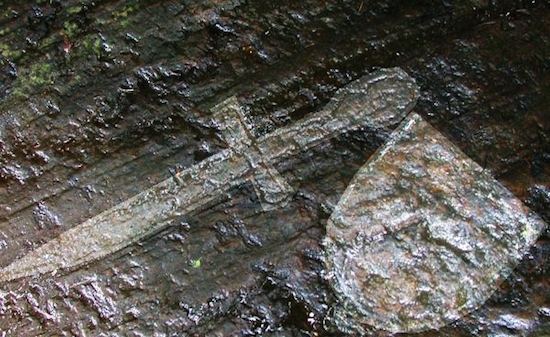 | ||
Westford knight monument unveiling
"Westford Knight" is the name given to a pattern, variously interpreted as a carving or a natural feature, or a combination of both, located on a glacial boulder (also known as the Sinclair Rock) in Westford, Massachusetts in the United States.
Contents
- Westford knight monument unveiling
- Westford knight screening
- Contemporary pseudoarchaeology
- Books
- References
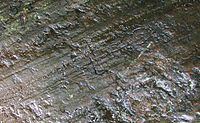
It is notable for being the subject of popular or pseudohistorical speculation on Pre-Columbian trans-oceanic contact. The pattern was first described as a possible Native American carving in 1873. The identification as a "medieval knight" dates to 1954.
Westford knight screening
Contemporary pseudoarchaeology
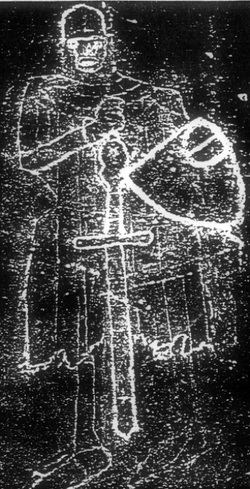
The current interpretation by those who advocate that the feature on the rock is a human figure is that it commemorates a fallen member of the party of Henry Sinclair, a Scottish Earl whom some believe to have made a voyage to the New World in 1398, traveling to Nova Scotia and New England. Usually it is claimed that the knight is Sir James Gunn, a member of Clan Gunn and a Knight Templar who reportedly traveled with Sinclair. The monument next to the "knight" commemorates this interpretation, stating as fact that Sinclair and his party traveled to present-day Massachusetts. Believers in this theory often cite the Newport Tower in Newport, Rhode Island as further evidence to support their claim.
The theory has no credibility in scholarship. It was mentioned in an Encyclopedia of Dubious Archaeology in 2010.
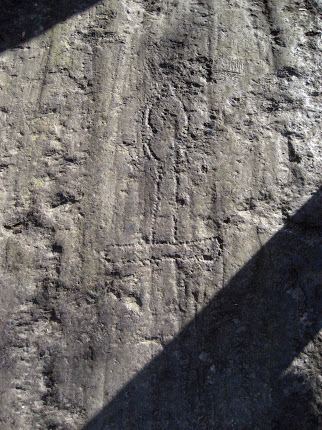
A recent investigation of the rock by David K. Schafer, Curatorial Assistant for Archaeology at the Peabody Museum of Archaeology and Ethnology at Harvard University, concluded that except for the "sword handle", which is definitely a punch carving, the entire feature consists of naturally formed scratches caused by glaciation. The local town historian of Westford has stated that there is evidence that the T-shaped inscription was made in the late 19th century. There are some historians who believe that the area around the rock has undergone erosion since the clearing of trees in the 18th century, and that during the time of the alleged voyage by Sinclair, the rock may have been in a hardwood forest covered by 3 or 4 ft (1 or 1.3 m) of earth.
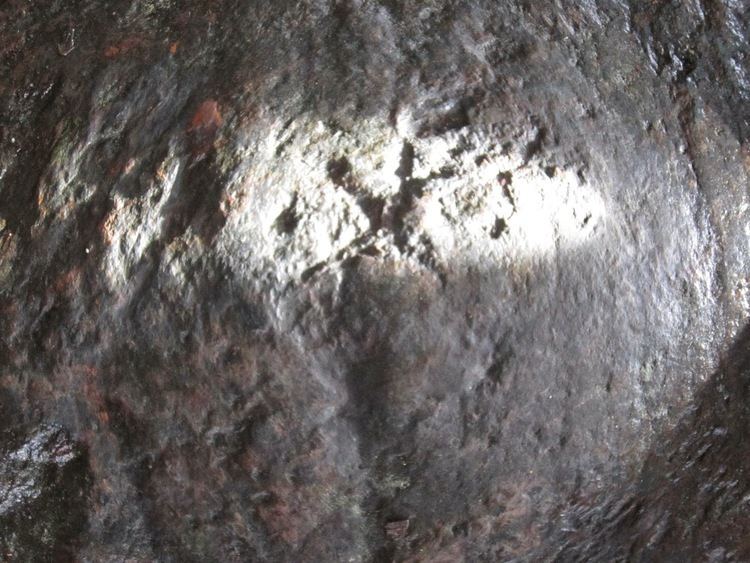
There are some historians who claim that the timing is inconsistent with documented history, as at the time of the alleged voyage (1398), the Order of the Knights Templar was not in existence, having been publicly disbanded ninety years earlier.
